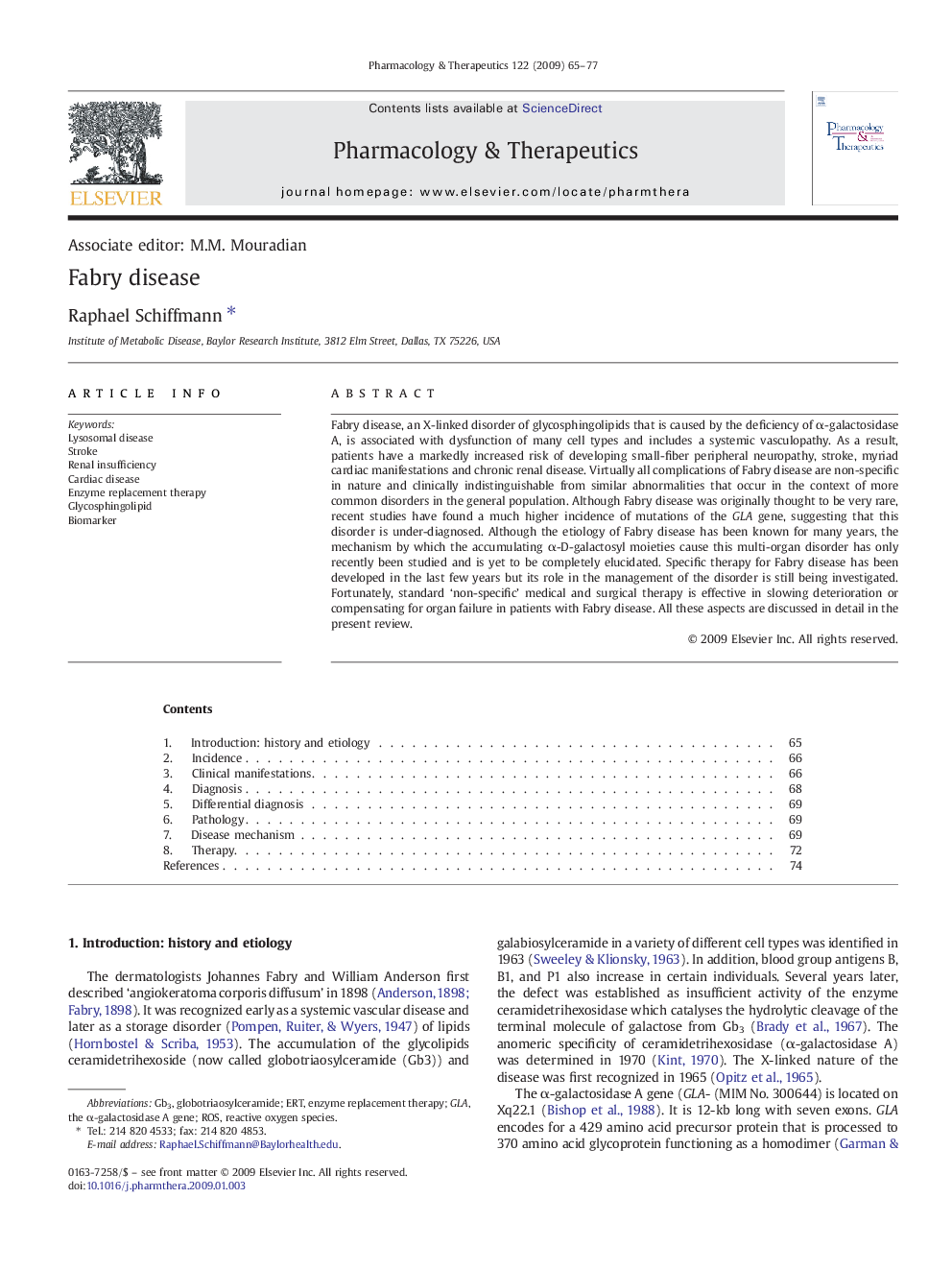| Article ID | Journal | Published Year | Pages | File Type |
|---|---|---|---|---|
| 2563526 | Pharmacology & Therapeutics | 2009 | 13 Pages |
Fabry disease, an X-linked disorder of glycosphingolipids that is caused by the deficiency of α-galactosidase A, is associated with dysfunction of many cell types and includes a systemic vasculopathy. As a result, patients have a markedly increased risk of developing small-fiber peripheral neuropathy, stroke, myriad cardiac manifestations and chronic renal disease. Virtually all complications of Fabry disease are non-specific in nature and clinically indistinguishable from similar abnormalities that occur in the context of more common disorders in the general population. Although Fabry disease was originally thought to be very rare, recent studies have found a much higher incidence of mutations of the GLA gene, suggesting that this disorder is under-diagnosed. Although the etiology of Fabry disease has been known for many years, the mechanism by which the accumulating α-D-galactosyl moieties cause this multi-organ disorder has only recently been studied and is yet to be completely elucidated. Specific therapy for Fabry disease has been developed in the last few years but its role in the management of the disorder is still being investigated. Fortunately, standard ‘non-specific’ medical and surgical therapy is effective in slowing deterioration or compensating for organ failure in patients with Fabry disease. All these aspects are discussed in detail in the present review.
